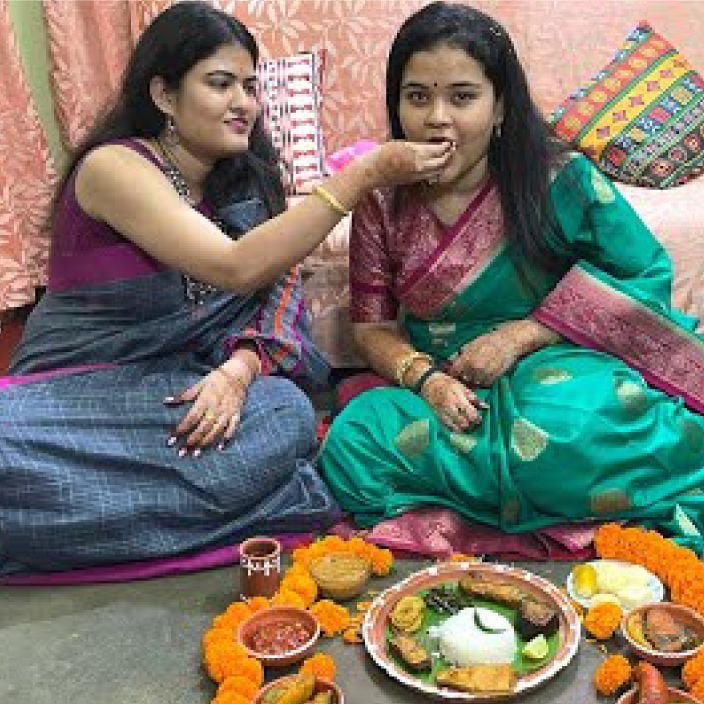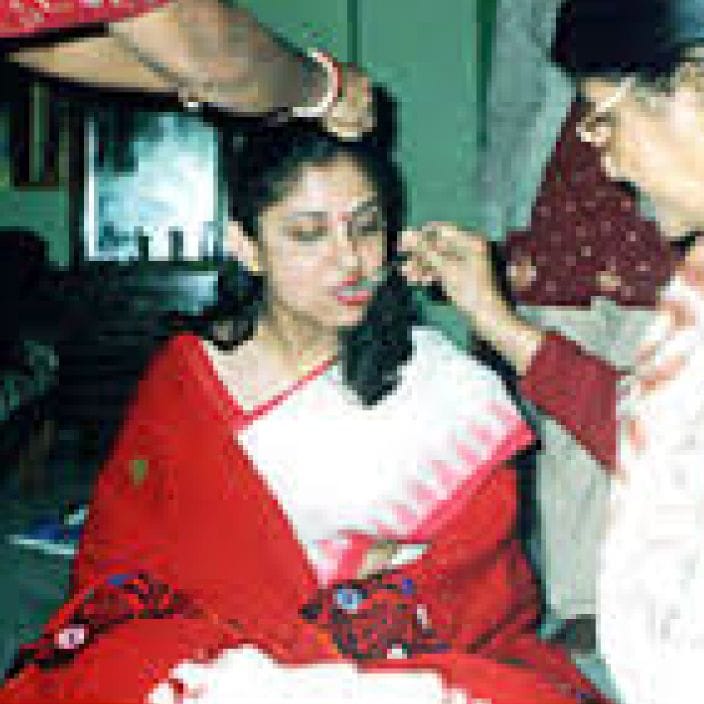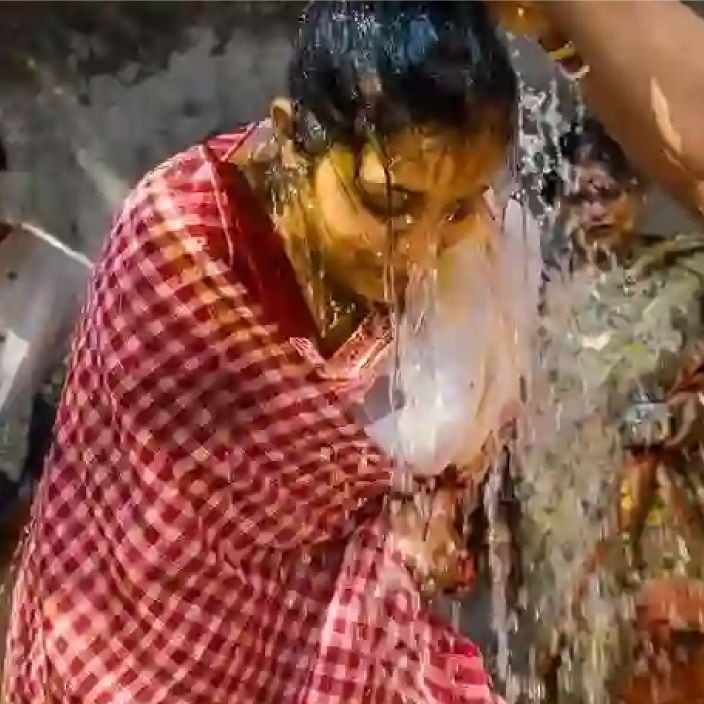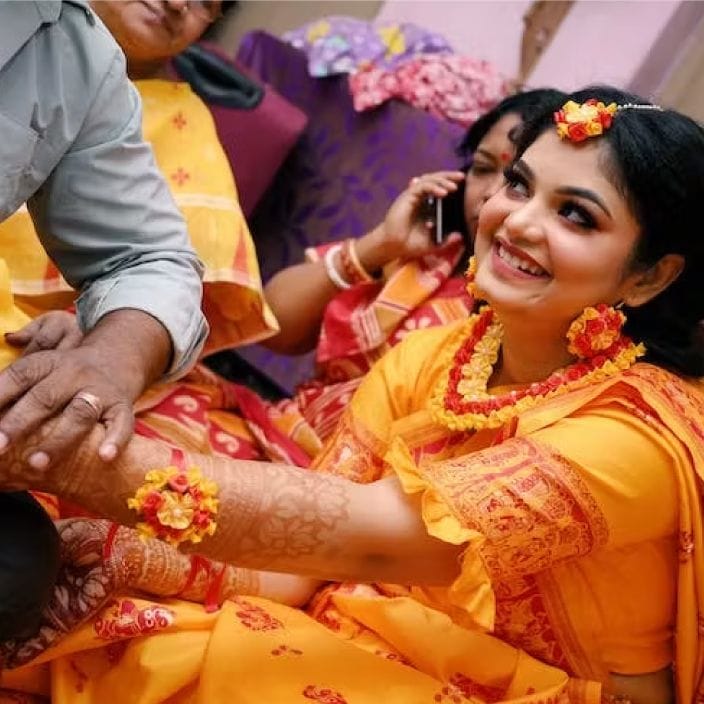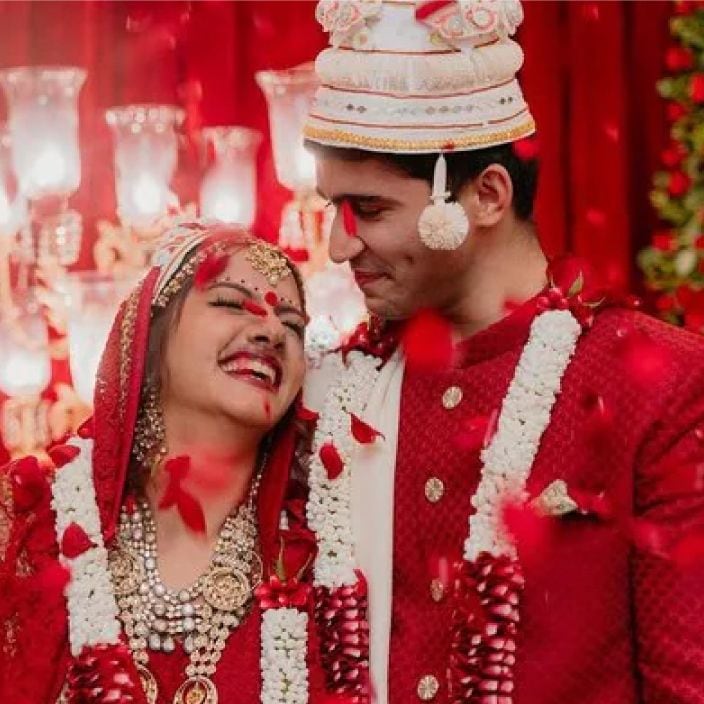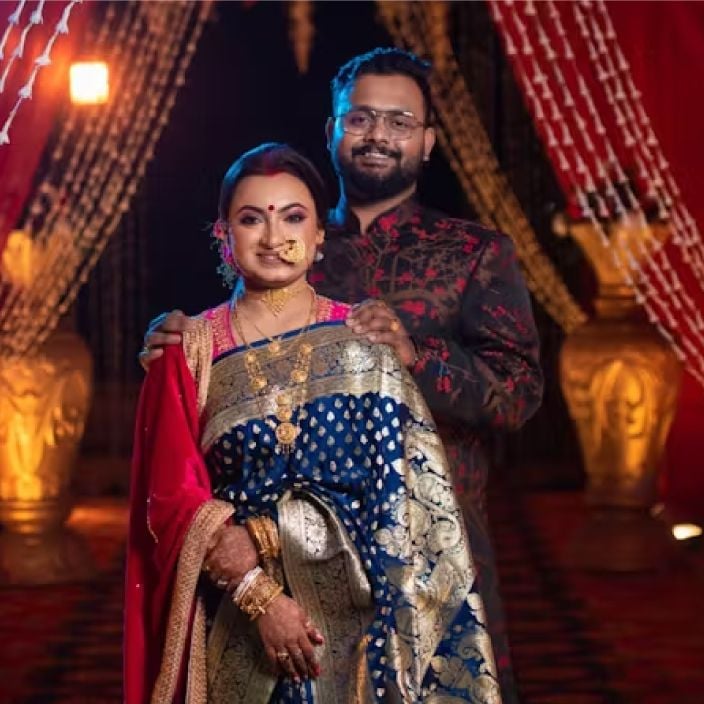For best prices and early deliveries, WhatsApp us at. 918488070070
West Bengal
Bengali weddings are vibrant and elaborate affairs with a series of rituals and customs. Traditionally, these ceremonies were intricate and lengthy, lasting several days at at time. Even today, weddings in West Bengal have several pre-wedding rituals leading up to the main function and a few rituals after the wedding as well. However, even with contemporary changes, Bengali weddings stay true to their rich history and heritage. The eastern state of West Bengal is a beautiful and diverse land known for its literature, music, dance, and culture. The majority of the population is Hindus, followed by Muslims. Christians, Buddhists, Jains, and other religious minorities form the rest of the population. Native Bengali-Hindus are the prominent ethnic group. Other Hindu communities in West Bengal include Marwaris, Biharis, Odias, Gurkhas, Punjabis, Sindhis, and Gujaratis. Owing to this, most Bengali weddings follow Hindu customs and ceremonies as laid down in Hindu scriptures. The ceremonies are rich with meaning and symbolism, making them memorable for everybody involved.
Tracing the Traditions
Like most Indian weddings, Bengali weddings start with fixing an auspicious date for the wedding. This private custom is called Adan Pradan and usually happens after the bride and groom have agreed to the wedding. It is held at home with both families present and a priest is invited to look at the couple’s horoscopes to find the best date for them. While it is a simple occasion, the families will exchange gifts and celebrate the first step towards the wedding.
Other pre-wedding rituals include Ashirbaad and Aiburo-bhaat. In Ashirbaad, the groom’s family visits the bride and gifts her jewellery, clothes, and family heirlooms that she can wear to the wedding. This is a gesture to make her feel a part of their family. The bride’s family also gifts the groom presents, and the two are given dhan and dubyo, or rice and trefoil leaves, as a blessing. Aiburo-bhaat takes place in the respective houses of the bride and groom, where they eat their favourite dishes before they are about to get married. It signals the start of the celebrations of a Bengali wedding.
Ganga is the main river in West Bengal and is considered holy by its people. This has given rise to another unique ritual is where family members invite the River Ganga to the wedding by blowing conch shells on the river bank and making offerings of betel leaves and turmeric. Turmeric shows up in the Gaye Holud and Holud Kota ceremonies, where the couple’s families apply turmeric paste on their face and body for a physical and spiritual cleansing. The couple must also pay homage to their ancestors in the Nandi Mukh ritual.
There are many variations of these customs as well. Some families celebrate Odhibash, where the bride’s family gives gifts to the groom’s mother, while others follow pati-patra or write the wedding date on two sheets of paper.
On the day of the wedding, rituals begin with the daybreak meal or Dodhi Mangal. The bride and groom eat chuda or soaked flattened rice mixed with mishit doi or sweet curd. After this, they are only allowed to eat sweets and water until they are married. The bride is also given a pair of white conch shells and red lac bangles called Sankha and Pola, that are symbols of a married woman.
At the wedding venue, the bride’s family receives the groom in the Bor Boron ceremony and is escorted to the wedding mandap. During Subho Drishti, the bride is carried to the mandap by her brothers on a wooden stool as she holds betel leaves to cover her face. Their eyes meet at the opportune moment as conch shells blow in the background. The couple then exchanges garlands in Mala Bodol.
Other wedding rituals include Samprodaan, where the elders in the bride’s family give her away. This is also known as Kanyadaan in other parts of the country. This is followed by a Yagna, where a priest recites Vedic mantras in front of a holy fire. In Saptapadi, the couple takes seven rounds around the fire, each representing a wedding vow. The bride’s brother then gives the couple puffed rice to offer, which they can offer to the first in the Kusumdinge ritual. The ceremony concludes with Bodhu Boron, a heartfelt welcome of the bride into her new home with blessings and Aarti.
The wedding concludes with the Sindoor Daan. The groom then applies sindoor (vermillion) on the bride’s forehead, after which the bride's face is covered by a new saree offered by the groom’s family. After this, the bride bids farewell to her family in an emotional Biday ceremony and walks out of the wedding venue while throwing back rice behind her.
The post-wedding festivities include Boubhat, where the groom’s family hosts a grand reception to officially introduce the bride to the extended family. The groom must jump through one more hoop, though. In the Bashor Ghor custom, the couple must have dinner with their family and close friends. The fun bit? The bride’s sisters will not let their new brother-in-law enter the dining room until he pays them money.
Wedding Attire
The Bengali bride is a picture of ultimate grace and beauty on her wedding day. She has one of the most classic and iconic bridal looks amongst the different states, which makes her easily recognisable. Traditionally, she wears a red Banarasi silk saree with intricate gold or silver zari work. However, modern brides can also play around with shades of maroon, magenta, or pink.
What truly sets apart the Bengali bride is her traditional jewellery and accessories. The most distinct ornament is the Topor or Mukut, a pure white crown made of white cork or shola in Bengali carved with traditional designs. For a softer look, she can wear a gold tiara called the Shonar Mukut. This unique headpiece, a big red bindi, and the delicate red and white dotted patterns on her forehead and over her eyebrows are the most distinguishable features of the Bengali bride.
Some of the traditional jewellery she wears is the chik, a heavy gold choker, and a Saat Noli Haar, a traditional seven-layered neckpiece that has been passed down through generations. The five-layered version is called Paanch Noli Haar. Her ears are adorned with Kaan Balas, a statement Bengali ear cuff, and Kaan Pashas, a large gold stud with detailed embossing. She can pair these with gold Jhumkas or traditional dangling earrings. She also wears a large nose ring, Nath or Nolok, as well as classic red and white Sankha-Pola bangles. Completing her look are alta designs on her hand and graceful haath phools.
The traditional attire for the groom is a Panjabi, a Kurta made from tussar silk, cotton-silk or muga silk with heavy kantha embroidery, worn over pyjamas or a dhoti. Garad silk kurtas in shades of beige, cream and honey are the classic choices. The groom also wears a white Topor as well as gold chains and rings.
Traditional Cuisine
The traditional cuisine of West Bengal ??relies on fresh ingredients and subtle spices to elevate the simple to scrumptious. At the heart of Bengali cuisine lies rice, often served with a variety of lentils, vegetables, and fish or meat. Owing to the state’s proximity to the Bay of Bengal and its many rivers, some of the quintessential dishes are fish and seafood-based.
Popular dishes include Machher Jhol, a spicy fish curry, Shorshe Ilish, Hilsa fish cooked in mustard, and Chingri Malaikari, prawns in coconut milk. Fish Kalia, a red fish curry made with Rui or Rohu fish, is a must-have at Bengali weddings. The pièce de résistance of any Bengali wedding is bhetki paturi, fish fillets marinated in mustard paste and steamed in banana leaves, and mutton kosha, a delicious slow-cooked mutton curry.
Vegetarian dishes also have a place in Bengali cuisine, with classics like aloo posto, potatoes cooked in a poppy seed paste, and shukto, a mixed vegetable stew flavoured with mustard and bitter gourd.
The wedding menu often includes appetisers like shingara, spicy samosas, and beguni, battered and fried eggplant slices. Luchi, Basanti Pulao, Panta bhat, Kati roll, Biryani, and Phuchka are other crowd favourites.
No Bengali wedding feast is complete without sweets. From Mishit Doi to Pantua to Chomchom, Bengalis are renowned for their desserts. Rôshogolla, darbesh, shôndesh, and malpoa are classic sweets that will definitely be on the wedding buffet. Sweets such as narkol-naru, til-naru, moa and payesh are specially made for the pooja ceremonies.
Common beverages include shorbot, lachhi, ghol, matha, falooda and Rooh Afza. The Bengalis are also famous for their dudh cha (milk tea) and masala cha (spiced tea). Traditional fruit juices called rosh are also popular, with several options such as sugarcane juice, mango juice, palm fruit juice, date juice as well as basil seed or tukma-based drinks.
Cultural Decor
From the moment you step into a Bengali wedding, you are greeted with an elegant vista that reflects the state's cultural traditions. The mandap is the focal point of the wedding and is often decorated with flowers, drapes, and chandeliers. Traditional motifs and patterns often show up in Bengali wedding decor. Alpana is a Bengali folk art similar to rangolis, made with rice paste or white powder. Its intricate designs are used to decorate the floors and walls of the venue.
Floral arrangements with marigolds, jasmine, and roses also feature prominently in Bengali wedding decor. From floral arches at the entrance to the centrepieces on dining tables, flowers lend a freshness to the occasion. Bengali weddings also incorporate regional arts and crafts in their decor. Kantha embroidery is the traditional embroidery of the state. Kantha dupattas, tablecloths, and drapes with this exquisite threadwork are often used in the wedding venue and to decorate the mandap.
Bengal is also known for its terracotta art and sculptures. Little clay figurines, statues of gods and goddesses, or terracotta vessels can add a handcrafted touch to the wedding. Other local crafts include jute work and metal work called Dokra. Sholapith is another popular craft that uses milky-white sponge wood to craft delicate flowers, birds, figurines, and decorative items.
It would be remiss to mention the vibrant Bengali art of Patachitra and Kalighat painting. Made using natural dyes and colours, this painting style is revered for its minute details and narratives. You can spot these in Bengali wedding invitations and other paper decorations. The Bengali wedding ambience is completed with Shehnai recitals, blowing off the conch shells, and ululation by the women.

